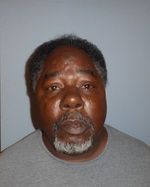
This report was generated by Maptimum. Visit www.maptimum.com to create yours for any area in the U.S.
Neighborhood Report for Elmira Road
This comprehensive research report provides up-to-date and accurate data, along with AI-powered analysis, on the following area:
| Address | Surroundings | Created on |
|---|---|---|
| 1.00-mi Radius | 10/12/2024 |
Executive Summary
 Fun Facts
Fun Facts
- Historic Roots: The MLK neighborhood is named after Martin Luther King Jr., reflecting its rich history and cultural significance in the civil rights movement.
- Diverse Architecture: The area features a mix of architectural styles, from charming mid-century homes to modern new builds, showcasing the neighborhood's evolution over time.
- Community Events: The neighborhood hosts the annual East Austin Studio Tour, a popular event that celebrates local artists and fosters community engagement.
 Suitability
Suitability
- Cultural Diversity: With a racial and ethnic composition of 35% Non-Hispanic White, 31% Hispanic, and 25% Black/African American, the area aligns well with your preference for a diverse community.
- Family Presence: Although only 23% of households have children, the presence of families indicates a community where your family could find peers and playmates.
- Safety Concerns: The high personal crime index of 205 and the presence of 54 registered sex offenders may be concerning for a family with young children.
- Educational Opportunities: The Austin Independent School District ranks in the 43rd percentile, which may not meet your expectations for high-quality education.
- Overall Conclusion: While the neighborhood offers cultural diversity and urban vibrancy, safety and school quality may require further consideration before committing long-term.
 The Positive
The Positive
- Urban Vibe: The area’s bustling urban environment, with 42% residential and 6% urban/commercial land cover, provides the lively atmosphere you desire.
- Strong Economic Indicators: A low unemployment rate of 3.45% and a median household income of $83,505 suggest a stable economic environment.
- Political Alignment: With 89% of votes cast for Biden in 2020, the neighborhood aligns with your liberal political preference.
 The Negative
The Negative
- Safety Risks: The property crime index of 160 and personal crime index of 205 are significantly above the national average, indicating a need for vigilance and possibly enhanced security measures.
- Flood Risk: The area has a high flood risk, which could impact property insurance costs and require flood-proofing measures for homes.
- Limited Transit Options: A transit score of 45 suggests limited public transportation options, which may necessitate reliance on personal vehicles for commuting.
 Alternatives
Alternatives
- Hyde Park : Known for its historic charm and strong community feel, Hyde Park offers better school ratings and a lower crime rate, though it may come with a higher price tag.
- Mueller : This master-planned community offers excellent amenities, including parks and a town center, with a strong focus on sustainability and family-friendly activities.
- South Lamar : Offers a vibrant cultural scene with numerous dining and entertainment options, along with a more favorable crime rate and school performance compared to MLK.
Desirability Score
Measures how closely a neighborhood matches an ideal location, ignoring cost. Scores range from 0 to 100, with higher scores indicating better suitability for the typical homebuyer.
Bang for the Buck Score
Measures the quality of life relative to cost. Scores range from 0 to 100; a score above 50 indicates good value, while below 50 suggests the area may be overpriced.
34/100Data and Statistics
- The People
- The Economy
- Housing
- Safety and Security
- Schools
- Environmental Health
- Natural Risks
- Lifestyle
- Politics and Social Climate
- Investment Insights
The People
Population
Rising population growth often signals a vibrant, growing community, leading to increased housing demand and potential for value appreciation. However, it's a double-edged sword; rapid growth might stretch local infrastructure and resources, possibly impacting the area's quality of life.
| Population | 12,625 |
|---|---|
| Population (5-Year Projection) | 14,791 |
| 5-Year Growth Forecast | 17.16% |
| Density (Person per Square Mile) | 4,021 |
| Density Level | Medium High |
Household Composition
The makeup of households is a valuable insight for those seeking areas that resonate with family-oriented or child-friendly vibes.
| Number of Households | 5,438 | ||||||||
|---|---|---|---|---|---|---|---|---|---|
| Average Household Size | 2.32 | ||||||||
| Household Makeup | |||||||||
| Families with Kids | 23.00% | ||||||||
| Families without Kids | 23.32% | ||||||||
| Non-Families | 53.68% | ||||||||
Age Groups
Age information is helpful for those aiming to align their living environment with their lifestyle preferences—whether you’re drawn to the energy and vibrancy of younger communities or the tranquility and maturity of areas with an older demographic.
| Median Age | 35.10 | ||||||||
|---|---|---|---|---|---|---|---|---|---|
| Age Groups | |||||||||
| 0-9 Years | 11.64% | ||||||||
| 10-19 Years | 8.80% | ||||||||
| 20-34 Years | 29.39% | ||||||||
| 35-49 Years | 25.75% | ||||||||
| 50-64 Years | 12.81% | ||||||||
| 65+ Years | 11.60% | ||||||||
Racial/Ethnic Composition
This breakdown helps pinpoint areas that align with your desire for cultural homogeneity or diversity.
| Non-Hispanic White | 35.21% |
|---|---|
| Hispanic | 31.04% |
| Black/African American | 25.18% |
| Asian | 4.06% |
| Other | 4.51% |
The Economy
Education
Educational attainment percentages are for individuals aged 25 and older. Higher education levels in a community often correlate with increased civic engagement, safety, and prosperity.
| Average Schooling Years | 15.75 | ||||||||
|---|---|---|---|---|---|---|---|---|---|
| Educational Attainment Breakdown | |||||||||
| Less than High School | 8.67% | ||||||||
| High School or Some College | 35.30% | ||||||||
| College Degree | 35.92% | ||||||||
| Graduate/Professional Degree | 20.11% | ||||||||
Income Distribution
This section provides a detailed breakdown of household income levels in the area. Understanding a community's financial standing can reveal insights into its standard of living, economic diversity, and growth potential.
| Median Household Income | $83,500 | ||||||||
|---|---|---|---|---|---|---|---|---|---|
| On Food Stamps/SNAP | 11.35% | ||||||||
| Income Brackets | |||||||||
| $0-$25K | 16.62% | ||||||||
| $25K-$50K | 13.06% | ||||||||
| $50K-$100K | 27.01% | ||||||||
| $100K-$200K | 25.52% | ||||||||
| $200K+ | 17.76% | ||||||||
Labor Market
Labor force participation is the percentage of the 16+ population working or actively seeking work. A higher rate shows greater economic engagement.
People not in the labor force are those neither working nor seeking work, like retirees, students, or discouraged workers.
The unemployment rate is the percentage of the labor force without jobs. A lower rate signals a stronger job market with more opportunities.
| Labor Force Participation Rate | 72.15% |
|---|---|
| Unemployment Rate | 3.45% |
Housing
Occupancy Rates
Areas where most houses are owner-occupied (rather than rented) are more desirable because owners are more financially and emotionally invested in their properties and the community's well-being. High vacancy rates are a negative indicator, as they can signal that the area is in decline.
| Total Housing Units | 5,968 | ||||||||
|---|---|---|---|---|---|---|---|---|---|
| Occupancy | |||||||||
| Owner Occupied | 53.69% | ||||||||
| Renter Occupied | 37.43% | ||||||||
| Vacant | 8.88% | ||||||||
Age of Buildings
Reviewing the age of structures helps you understand the mix of modern and historic structures, anticipate the longevity of the infrastructure, and make informed investment decisions based on the area's growth and evolution.
| Median Year Built | 1991 | ||||||||
|---|---|---|---|---|---|---|---|---|---|
| Age Breakdown | |||||||||
| New (Since 2020) | 1.12% | ||||||||
| Recent (2010-2019) | 25.37% | ||||||||
| Mid-Age (1980-2009) | 22.67% | ||||||||
| Old (Before 1980) | 50.84% | ||||||||
Nearby Low-Income Housing
The availability of subsidized housing can influence neighborhood property values.
Main Types of Subsidized Housing:
- Public Housing: Government-owned, managed by local authorities, offering affordable rents to low-income residents.
- Project-Based Section 8: Private landlords provide reduced-rent apartments, subsidized by the government.
- Low Income Housing Tax Credit (LIHTC): Incentivizes private developers with tax credits to create below-market rent properties for low-income tenants. LIHTC does not directly subsidize rents.
In the table below, Properties refer to distinct parcels of land or buildings designated as low-income housing. Units are the individual housing units (such as apartments) within those properties.
| Total Properties | 11 | ||||||||
|---|---|---|---|---|---|---|---|---|---|
| Closest Property (mi) | 0.26 | ||||||||
| Total Units | 570 | ||||||||
| Units per Square Mile | 181.53 | ||||||||
| Property Types | |||||||||
| Public Housing | - | ||||||||
| Section 8 | 1 (97 Units) | ||||||||
| LIHTC | 10 (473 Units) | ||||||||
Land Cover
Understanding a neighborhood's land cover helps you evaluate the aesthetic appeal, potential for recreational activities, and the balance of natural versus developed spaces.
Concise descriptions for each land cover category:
- Landscaped Areas: Developed open spaces consisting mostly of vegetation, such as parks, golf courses, and residential gardens.
- Residential Areas: Areas with a balanced mix of buildings and vegetation, such as single-family homes.
- Urban & Commercial: Highly developed zones, including apartment complexes and commercial/industrial buildings.
- Water Bodies: Open bodies of water like lakes, rivers, and ponds.
- Wooded Areas: Forests dominated by tall trees, either deciduous, evergreen, or mixed.
- Wild Vegetation: Areas with natural plant growth, including shrubs and herbaceous vegetation.
- Farms & Gardens: Agricultural lands used for crops or livestock, such as fields of corn, soybeans, or pastures for grazing.
- Marshes & Swamps: Wetlands either forested or grass-dominated.
| Landscaped Areas | 33.18% |
|---|---|
| Residential Areas | 41.69% |
| Urban & Commercial | 6.39% |
| Water Bodies | 0.00% |
| Wooded Areas | 14.25% |
| Wild Vegetation | 2.33% |
| Farms & Gardens | 0.16% |
| Marshes & Swamps | 1.87% |
Safety and Security
Crime Indexes
Crime Indexes compare local safety to a national average set at 100. For example, a crime index of 200 means the area has double the national average crime rate. Remember, the national average includes quieter rural areas, so urban centers may naturally show higher indexes.
- Property crime involves private property, such as burglary and motor vehicle theft.
- Personal crime is characterized as a violent crime that results in physical, emotional, or psychological harm to the victim, such as assault and battery.
| Total Crime Index | 167 |
|---|---|
| Property Crime Index | 160 |
| Personal Crime Index | 205 |
Fatal Car Accidents and DUIs
Government agencies release national fatal car accident data with a two-year delay. Extra caution is recommended in areas with higher accident frequencies.
You can see the exact location of fatal accidents on the map:
- Non-DUI Accidents: Fatal accidents where the driver was not under the influence.
- DUI Accidents: Fatal accidents where the driver was under the influence.
| Data Period | 2019-2022 |
|---|---|
| All Fatal Accidents | 4 |
| Annual Fatal Accidents per Square Mile | 0.32 |
| Involving DUI | 0.00% |
Sex Offender Registry
This section provides detailed information from the Sex Offender Registry, including names, addresses, and specific convictions, to enhance your neighborhood safety awareness.
| Total Sex Offenders | 54 | ||||||||
|---|---|---|---|---|---|---|---|---|---|
| Sex Offenders per Square Mile | 17.20 | ||||||||
| Closest Sex Offender (mi) | 0.06 | ||||||||
| Conviction Type | |||||||||
| Offense Against Children | 42 | ||||||||
| Rape | 0 | ||||||||
| Sexual Battery | 10 | ||||||||
| Other Offense | 2 | ||||||||
Schools
Public School Districts
In many areas, students' options for attending public schools are determined by their residential address, linking them to specific school districts. Consequently, the quality of the schools within these districts plays a crucial role in shaping the educational outcomes of students. Additionally, high-performing school districts often indicate a strong community commitment to education, which can reflect positively on the neighborhood's overall desirability.
On the map, you will find the school districts that intersect with your selected area, along with detailed information about the nearby schools within each district.
| Main District | Austin ISD |
|---|---|
| Grade Range | PK-12 |
| Number of Schools | 119 |
| Number of Students | 73,384 |
| Student/Teacher Ratio | 16.55 |
| State Rank | 554 out of 968 |
| State Rank Percentile | 42.77% |
| Other Nearby Districts | - |
| Name | Level | District | Distance (mi) | Students | State Rank Percentile | Student/Teacher Ratio | On Lunch Subsidy | White | Hispanic | Black | Asian |
|---|---|---|---|---|---|---|---|---|---|---|---|
| Norman-Sims Elementary | Elementary (PK-5) | Austin ISD | 0.85 | 278 | 4.11% | 19.80 | 95.68% | 2.16% | 50.72% | 41.01% | 4.32% |
| General Marshall Middle | Middle (6) | Austin ISD | 0.97 | 0 | - | - | - | - | - | - | - |
| Ortega Elementary | Elementary (PK-6) | Austin ISD | 1.00 | 274 | 25.09% | 15.30 | 90.15% | 5.47% | 78.10% | 13.87% | 1.46% |
| Pecan Springs Elementary | Elementary (PK-5) | Austin ISD | 1.40 | 292 | 1.37% | 16.20 | 96.58% | 5.48% | 63.70% | 26.71% | 1.03% |
| Oak Springs Elementary | Elementary (PK-5) | Austin ISD | 1.45 | 233 | 0.94% | 22.50 | 96.57% | 3.43% | 60.09% | 34.76% | 0.43% |
| Blanton Elementary | Elementary (PK-5) | Austin ISD | 1.60 | 620 | 73.88% | 15.70 | 41.61% | 41.13% | 42.10% | 7.42% | 2.58% |
| Govalle Elementary | Elementary (PK-6) | Austin ISD | 1.64 | 360 | 2.78% | 13.70 | 85.28% | 2.78% | 80.56% | 15.83% | 0.28% |
| Campbell Elementary | Elementary (PK-5) | Austin ISD | 1.70 | 185 | 19.72% | 15.40 | 71.35% | 21.08% | 27.57% | 40.00% | 6.49% |
| Eastside Early College High School | High (9-12) | Austin ISD | 1.71 | 699 | 9.01% | 19.90 | 80.97% | 2.43% | 80.54% | 15.45% | 0.86% |
| Maplewood Elementary | Elementary (PK-5) | Austin ISD | 1.85 | 402 | 85.88% | 14.30 | 28.86% | 50.00% | 31.59% | 7.46% | 2.24% |
| Lasa High School | High (9-12) | Austin ISD | 1.90 | 1,432 | 99.70% | 17.80 | 13.62% | 43.09% | 21.79% | 2.65% | 24.37% |
| Sadler Means Ywla | Middle (6-8) | Austin ISD | 2.03 | 322 | 4.74% | 17.90 | 86.02% | 4.66% | 74.53% | 16.15% | 2.80% |
| Alternative Learning Center | High (6-12) | Austin ISD | 2.09 | 114 | - | 11.40 | 78.07% | 11.40% | 68.42% | 17.54% | 0.00% |
| Harris Elementary | Elementary (PK-5) | Austin ISD | 2.12 | 373 | 7.27% | 14.30 | 89.81% | 3.75% | 80.16% | 13.14% | 1.07% |
| Garza Independence High School | High (10-12) | Austin ISD | 2.19 | 150 | - | 5.70 | 45.33% | 39.33% | 44.00% | 8.67% | 3.33% |
| Andrews Elementary | Elementary (PK-5) | Austin ISD | 2.32 | 343 | 9.11% | 18.00 | 96.21% | 5.83% | 78.72% | 5.83% | 9.04% |
| Kealing Middle | Middle (6-8) | Austin ISD | 2.35 | 1,255 | 93.73% | 18.10 | 29.56% | 37.85% | 29.48% | 10.28% | 15.30% |
| Winn Montessori | Elementary (PK-5) | Austin ISD | 2.35 | 267 | 23.98% | 16.00 | 66.29% | 12.73% | 59.18% | 20.60% | 2.62% |
| Blackshear Elementary | Elementary (PK-5) | Austin ISD | 2.50 | 262 | 25.82% | 13.70 | 54.20% | 24.05% | 42.75% | 22.90% | 1.15% |
| Jordan Elementary | Elementary (PK-5) | Austin ISD | 2.57 | 555 | 0.58% | 15.10 | 93.15% | 3.60% | 66.85% | 23.96% | 3.78% |
| Lee Elementary | Elementary (K-6) | Austin ISD | 2.58 | 458 | 87.17% | 14.50 | 21.62% | 65.50% | 18.34% | 2.40% | 7.42% |
| Lbj Echs | High (9-12) | Austin ISD | 2.62 | 772 | 11.22% | 15.60 | 79.40% | 1.42% | 65.41% | 30.44% | 1.17% |
| Ridgetop Elementary | Elementary (PK-5) | Austin ISD | 2.63 | 367 | 90.29% | 15.20 | 19.07% | 40.05% | 47.68% | 2.18% | 3.00% |
| Northeast Early College High School | High (9-12) | Austin ISD | 2.76 | 1,019 | 7.95% | 16.70 | 92.54% | 3.53% | 83.81% | 10.30% | 1.47% |
| Zavala Elementary | Elementary (PK-6) | Austin ISD | 2.76 | 259 | 7.74% | 11.90 | 86.87% | 7.72% | 68.73% | 20.46% | 0.77% |
Charter, Magnet, and Private Schools
For families seeking alternatives to traditional public schools, several options are available:
- Charter Schools: Publicly funded but independently run, charter schools offer innovative curriculums and may enroll students from any area.
- Magnet Schools: Specializing in areas like science, the arts, or technology, magnet schools attract students from multiple districts with unique programs.
- Private Schools: Privately funded, these schools are not bound by many of the public school regulations and often provide customized educational experiences with smaller class sizes.
The map displays nearby charter, magnet, and private schools (if any) along with key information about each.
| Name | Level | Type | Faith Affiliation | Coed | Distance (mi) | Students | State Rank Percentile | Student/Teacher Ratio | On Lunch Subsidy | White | Hispanic | Black | Asian |
|---|---|---|---|---|---|---|---|---|---|---|---|---|---|
| Los Amiguitos | Private (PK-2) | Private | Nonsectarian | Coed | 0.57 | 19 | - | 5.00 | - | 21.05% | 5.26% | 0.00% | 5.26% |
| Idea Health Professions Academy | Elementary (K-5) | Charter | - | - | 1.00 | 286 | 6.33% | 15.00 | 88.46% | 7.34% | 70.98% | 20.28% | 0.70% |
| Idea Health Professions College Preparatory | Middle (6-10) | Charter | - | - | 1.00 | 264 | 73.36% | 11.50 | 89.02% | 7.95% | 75.38% | 14.39% | 0.38% |
| Austin Peace Academy | Private (PK-12) | Private | Islamic | Coed | 1.02 | 605 | - | 6.90 | - | 32.56% | 3.97% | 3.97% | 55.37% |
| The East Austin College Prep At Southwest Key | Elementary (PK-6) | Charter | - | - | 1.13 | 161 | 2.31% | 16.80 | 98.14% | 0.62% | 89.44% | 8.70% | 0.00% |
| The East Austin College Prep At Mlk | High (7-12) | Charter | - | - | 1.14 | 226 | 20.13% | 13.30 | 98.23% | 2.21% | 88.94% | 7.96% | 0.00% |
| Acton Academy | Private (1-12) | Private | Nonsectarian | Coed | 1.46 | - | - | - | - | - | - | - | - |
| Austin Achieve Middle | Middle (5-8) | Charter | - | - | 1.61 | 625 | 13.51% | 15.30 | 95.36% | 1.60% | 92.48% | 5.76% | 0.00% |
| Texans Can Academy - Austin | High (9-12) | Charter | - | - | 1.64 | 265 | 3.12% | 18.60 | 85.66% | 3.77% | 81.89% | 12.45% | 0.75% |
| Austin Independent School District (Isd) Prek Partnership (Pkp) | Prekindergarten (PK) | Charter | - | - | 2.08 | 92 | - | - | 88.04% | 17.39% | 59.78% | 18.48% | 1.09% |
| Texas Empowerment Academy | Alternative (3-12) | Charter | - | - | 2.08 | 242 | - | 12.30 | 57.02% | 0.00% | 9.50% | 87.60% | 0.41% |
| Texas Empowerment Academy Elementary | Elementary (PK-2) | Charter | - | - | 2.08 | 157 | - | 16.80 | 50.96% | 0.64% | 6.37% | 90.45% | 0.64% |
| Ascent: An Acton Academy | Private (PK-5) | Private | Nonsectarian | Coed | 2.34 | 65 | - | 9.10 | - | 72.31% | 0.00% | 3.08% | 9.23% |
| Greater Calvary Academy | Private (K-5) | Private | Nonsectarian | Coed | 2.40 | 7 | - | 2.30 | - | 0.00% | 0.00% | 100.00% | 0.00% |
| Odyssey School | Private (5-12) | Private | Nonsectarian | Coed | 2.46 | 56 | - | 4.70 | - | 75.00% | 12.50% | 5.36% | 5.36% |
| University Of Texas Elementary Charter School | Elementary (PK-5) | Charter | - | - | 2.54 | 296 | 65.50% | 14.70 | 56.76% | 13.51% | 65.54% | 15.88% | 1.35% |
| Founders Classical Academy-Austin North | Elementary (K-8) | Charter | - | - | 2.76 | 149 | 19.19% | 9.30 | 43.62% | 25.50% | 43.62% | 16.11% | 7.38% |
| Magnolia Montessori For All | Elementary (PK-6) | Charter | - | - | 2.78 | 456 | 37.41% | 16.40 | 49.78% | 31.14% | 45.83% | 10.09% | 4.82% |
| Texas Preparatory School - Austin Campus | Elementary (K-6) | Charter | - | - | 2.80 | 42 | - | 5.10 | 47.62% | 2.38% | 33.33% | 47.62% | 0.00% |
| Griffin School | Private (9-12) | Private | Nonsectarian | Coed | 2.81 | 151 | - | 6.60 | - | 72.19% | 13.91% | 3.97% | 7.28% |
| Austin Achieve Pflugerville | Elementary (PK-8) | Charter | - | - | 2.83 | 171 | 10.40% | 10.60 | 93.57% | 1.75% | 64.33% | 32.75% | 0.00% |
| Austin Achieve Northeast Elementary | Elementary (PK-4) | Charter | - | - | 2.85 | 1,008 | 9.33% | 16.10 | 90.97% | 2.78% | 80.56% | 14.88% | 0.50% |
Environmental Health
Drinking Water Quality
Clean drinking water is essential for good health. Under the Safe Drinking Water Act, water systems are required to meet strict safety regulations. Maptimum’s Water Health Score assesses water systems based on the following key factors:
- Population Served: Larger systems often have more resources and improved efficiency.
- Source: Groundwater (such as wells) is typically safer than surface water (like rivers) because it is naturally filtered through soil and rock, reducing the risk of contamination.
- Lead and Copper Levels: Lead and copper can enter drinking water from the corrosion of older pipes and plumbing. The 90th percentile of samples must meet EPA limits—0.015 mg/L for lead and 1.3 mg/L for copper.
- Health-Based Violations: These occur when contaminant levels (like Lead or Chlorine) exceed safe standards, or when treatment processes fail.
- Monitoring and Reporting Violations: Major violations where systems fail to properly monitor or report water quality.
- Unresolved Violations: Health-based or major violations that have not been resolved according to the latest reports.
Remember, water systems often cover entire cities or regions, so moving within the same area may not significantly change your water quality.
| Water System | CITY OF AUSTIN WATER & WASTEWATER | ||||||||
|---|---|---|---|---|---|---|---|---|---|
| Water Health Score | 4.05 / 5 Good | ||||||||
| Population Served | 1,115,323 | ||||||||
| Primary Source | Surface water | ||||||||
| Lead and Copper (Latest Sampling) | |||||||||
| Lead (Pb) | 0.0000 mg/L Safe | ||||||||
| Copper (Cu) | No Data | ||||||||
| Serious Violations (Last 5 Years) | |||||||||
| Health Based | 5 | ||||||||
| Monitoring/Reporting | 0 | ||||||||
| Not Yet Resolved | 0 | ||||||||
Air Quality
Air quality directly impacts health, with pollution linked to multiple health concerns. Air quality can vary within a day and seasonally. Our analysis uses hourly data from the past 365 days, highlighting the percentage of time the Air Quality Index (AQI) and specific pollutants were in the dangerous range.
| Poor or Very Poor Air Quality | 0.31% | ||||||||
|---|---|---|---|---|---|---|---|---|---|
| Worst Month | October | ||||||||
| Major Pollutant | - | ||||||||
| Pollutants | |||||||||
| Bad or Very Bad SO2 | 0.00% | ||||||||
| Bad or Very Bad NO2 | 0.00% | ||||||||
| Bad or Very Bad PM10 | 0.00% | ||||||||
| Bad or Very Bad PM2.5 | 0.00% | ||||||||
| Bad or Very Bad O3 | 0.00% | ||||||||
| Bad or Very Bad CO | 0.00% | ||||||||
Hazardous Waste Sites
Hazardous waste sites near your home can pollute air, soil, and water, posing health risks like respiratory issues, contaminated drinking water, and long-term exposure to hazardous chemicals. Even compliant facilities, when densely clustered, can create cumulative environmental impacts that affect quality of life and property values.
We consider a facility high-risk based on a combination of the following criteria:
- Active: Facilities with ongoing operations have a higher likelihood of environmental contamination.
- Transport: Involvement in waste transport raises the risk of accidents or spills.
- High Output: Large Quantity Generators (LQG) produce significant amounts of waste, posing greater risks.
- TSDFs: Treatment, Storage, and Disposal Facilities (TSDFs) handle hazardous waste, with a high potential for leaks and spills.
- History of Violations: Past violations of EPA or state regulations indicate a higher risk of non-compliance and incidents.
| All Sites | 8 | ||||||||
|---|---|---|---|---|---|---|---|---|---|
| High-Risk Sites | 1 | ||||||||
| High-Risk Sites per Square Mile | 0.32 | ||||||||
| Closest High-Risk Site (mi) | 0.09 | ||||||||
| Facility Types | |||||||||
| Active | 3 | ||||||||
| Transport | 1 | ||||||||
| Large Quantity Generator | 0 | ||||||||
| TSDFs | 0 | ||||||||
| With Recent Violations | 0 | ||||||||
Noise Pollution
A Soundscore™ rating, ranging from 50 (indicating high noise levels) to 100 (signifying low noise levels), measures the environmental noise of a location, providing a quantifiable insight into the auditory environment you can expect.
| Sound Score | 76 (Active) | ||||||||
|---|---|---|---|---|---|---|---|---|---|
| Sources of Noise | |||||||||
| Airports | Calm | ||||||||
| Vehicular Traffic | Active | ||||||||
| Local Commercial and Community | Active | ||||||||
Natural Risks
Earthquake Risk
This section utilizes Peak Ground Acceleration (PGA) data from the US Geological Survey (USGS) to forecast the maximum potential earthquake intensity and damage with a 2% probability of being exceeded in the area over the next 50 years, providing valuable insights into seismic risks.
| PGA | 0.03 |
|---|---|
| Earthquake Risk | Very Low |
Flood Risk
The flood risk data, sourced from FEMA, assess the likelihood and potential impacts of flooding by considering various factors including flood frequency, proximity to water bodies, and property characteristics like elevation and rebuilding costs.
On the map, areas are designated as high risk or moderate risk:
- High Risk: Classified as Special Flood Hazard Areas (SFHA), these regions face a 1% annual chance of flooding (equivalent to a 26% chance over a 30-year period, or a 100-year flood risk). In these areas, purchasing flood insurance is mandatory.
- Moderate Risk: These zones have a 0.2% annual chance of flooding (equivalent to a 6% chance within a 30-year timeframe, or a 500-year flood risk). Flood insurance is recommended here. Such areas may transition to high-risk in the future due to factors like urban development or environmental changes.
| Has High-Risk Zones | Yes (Type: AE, AO) |
|---|---|
| Closest High-Risk Zone (mi) | 0.09 |
| Has Moderate-Risk Zones | Yes (Type: X) |
Lifestyle
Walkability and Bikeability
The Walk Score, ranging from 0 to 100, gauges an address's accessibility on foot—the higher the score, the easier it is to accomplish daily errands without a car.
Similarly, the Bike Score evaluates an area's suitability for cycling based on infrastructure, topography, proximity to key destinations, road connectivity, and the cycling community's presence.
| Walk Score® | 39 (Car-Dependent) |
|---|---|
| Bike Score® | 57 (Bikeable) |
Dating and Marriage Outlook
Gain insights into the area's potential for connections, dating, and finding life partners. This section explores the social landscape, highlighting marital status for residents 15 years and older and detailing the female-to-male ratio for those aged 20 to 44. A ratio above 1 indicates more women than men, suggesting enhanced dating prospects for men, and vice versa.
| Marrital Status | |||||||||
|---|---|---|---|---|---|---|---|---|---|
| Single, Never Married | 47.37% | ||||||||
| Married | 38.53% | ||||||||
| Other | 14.09% | ||||||||
| Female to Male Ratio | 0.98 | ||||||||
Pet Friendliness
Pets, especially dogs, provide a great way for locals to interact and build connections. If you have pets, you'll likely enjoy living in an area with a high percentage of fellow pet owners.
| Has Any Pet | 41.27% |
|---|---|
| Has Dog(s) | 27.82% |
| Has Cat(s) | 19.51% |
Politics and Social Climate
Voting Patterns
Living in a community that shares your values can be important. Our detailed analysis of Presidential Election results at the precinct level—the most granular unit for voting data—allows you to understand the political tendencies of the area.
On the map, the precicits that intersect with your selected area, along with their vote count in the 2020 election, are presented:
- Solid Democratic: Precincts where the Democratic margin (percentage voting for the Democratic candidate minus the percentage voting for the Republican candidate) exceeds 15%.
- Leaning Democratic: Precincts where the Democratic margin is between 5% and 15%.
- Balanced: Precincts where the democrat margin is between -5% and 5%.
- Leaning Republican: Precincts where the Republican margin is between 5% and 15%.
- Solid Republican: Precincts where the Republican margin exceeds 15%.
| 2020 Presidential Election Results | |||||||||
|---|---|---|---|---|---|---|---|---|---|
| Joe Biden | 89.01% | ||||||||
| Donald Trump | 9.00% | ||||||||
Ideological Leanings
Gain deeper insights into the social fabric of the neighborhood with data on self-reported ideological leanings, sourced from MRI-Simmons surveys.
| Very Liberal | 29.44% |
|---|---|
| Somewhat Liberal | 34.29% |
| Somewhat Conservative | 21.48% |
| Very Conservative | 14.79% |
Investment Insights
Value Appreciation Forecast
Our forecast uses the latest area-specific trends and market activities to offer a strategic overview of expected growth across the overall area, rather than for individual homes.
| Median Home Value | 621,338 |
|---|---|
| 5-Year Forecast Median Home Value | 656,342 |
| 5-Year Appreciation Forecast | 5.63% |
Rental Viability Analysis
Gain insights into median rent and the rent-to-value ratio to identify promising rental investment opportunities. The 1% rule suggests a property is viable if the monthly rent is at least 1% of its value. Note that using area medians may skew this figure, especially if low-end homes dominate the rental market. Despite this, the ratio is a useful initial indicator for further exploration of rental investments.
| Median Monthly Rent | 1,890 |
|---|---|
| Median Home Value | 621,338 |
| Rent to Value Ratio | 0.30% |

Disclaimer: Due to the dynamic nature of the housing market, the information in this report may not always reflect the most current or precise data. Maptimum is not responsible for any discrepancies or inaccuracies.





















































